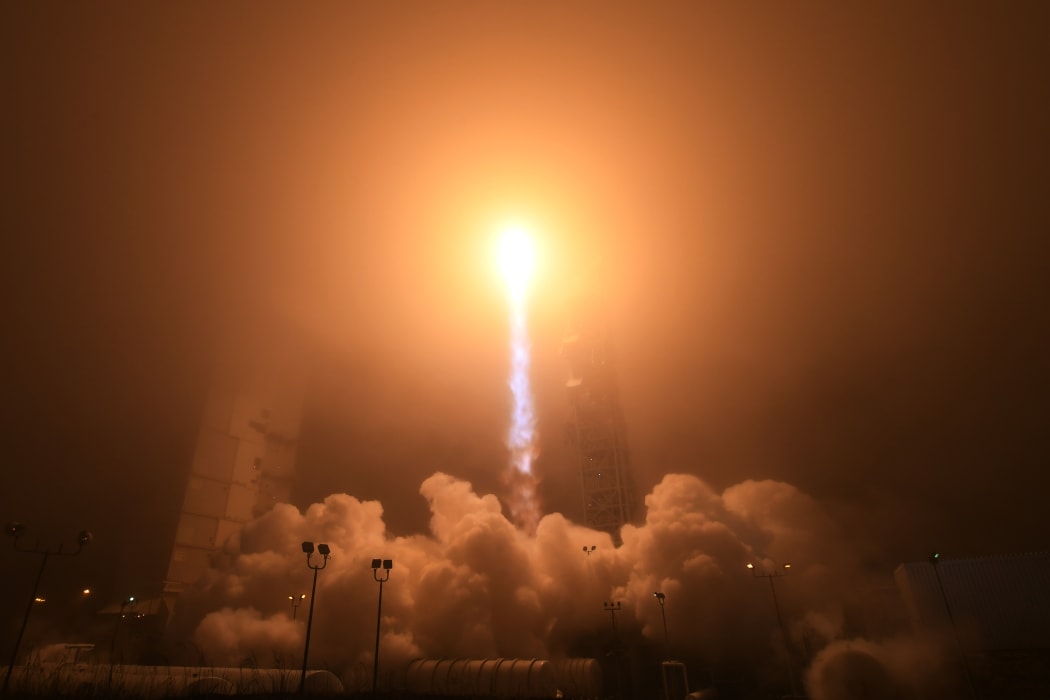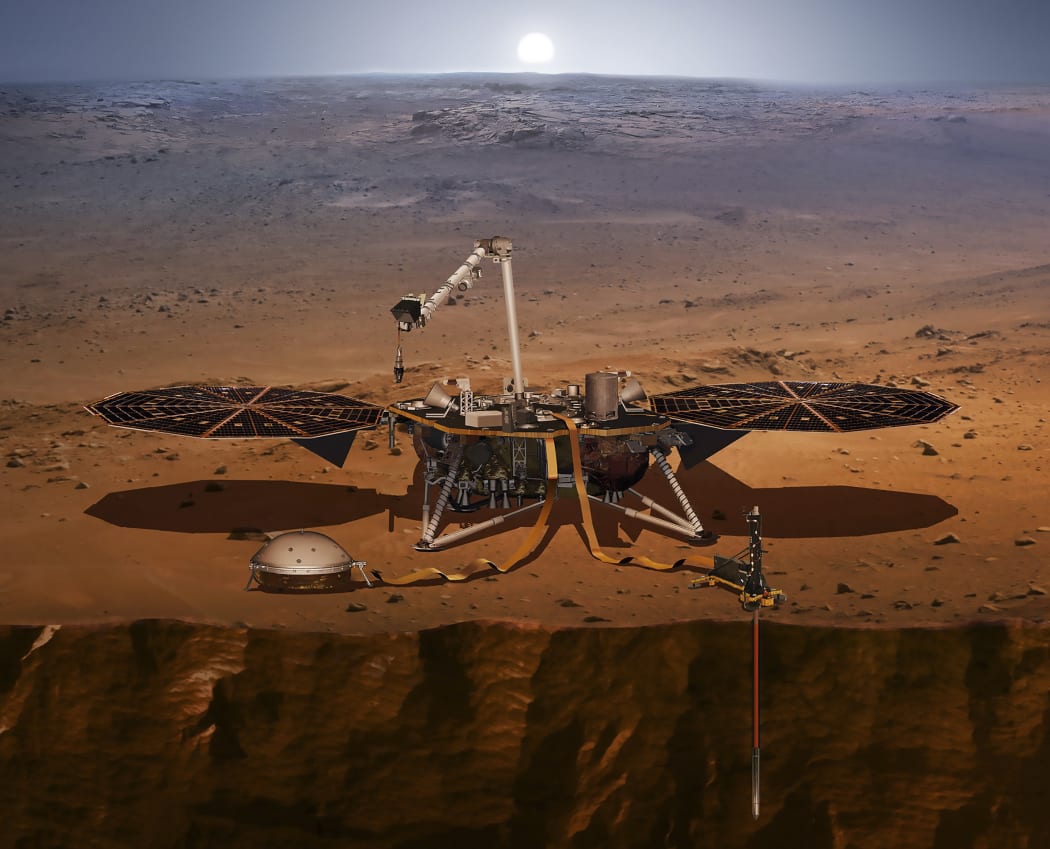The American space agency Nasa has launched its latest mission to Mars.

Nasa launched its latest Mars lander, called InSight, designed to perch on the surface and listen for "Marsquakes" ahead of eventual human missions to explore the Red Planet. Photo: AFP
InSight will be the first probe to focus its investigations predominantly on the interior of the Red Planet.
The lander - due to touch down in November - will put seismometers on the surface to feel for "Marsquakes".
These tremors should reveal how the underground rock is layered - data that can be compared with Earth to shed further light on the formation of the planets 4.6 billion years ago.
"As seismic waves travel through [Mars] they pick up information along the way; as they travel through different rocks," explained Dr Bruce Banerdt, InSight's principal investigator. "And all those wiggles you see on seismograms - scientists understand how to pull that information out. After we've gotten many, many Marsquakes from different directions, we can put together a three dimensional view of the inside of Mars."
Thick fog did not affect the launch on an Atlas rocket from the Vandenberg Air Force Base in California just after 4am local time on Saturday.
Nasa last sent seismometers to the Red Planet on the Viking landers in the 1970s. But these missions failed to detect ground vibrations because the instruments were positioned on the body of the probes.
All they recorded was the landers' shaking as the wind whistled by. InSight, by contrast, is going to place its seismometers directly in the Martian dirt.
How many quakes will be detected over the course of a year is uncertain, but estimates suggest perhaps a couple of dozen. They are likely to be small - probably well less than a Magnitude 3, which many people on Earth would sleep through.
However, even these gentler signals will carry sufficient information about the subsurface to allow scientists to construct a model of Mars' depths and composition.

This handout illustration shows NASA's Interior Exploration using Seismic Investigations, Geodesy and Heat Transport (InSight) to be used on the mission to Mars, a first-ever mission to study the heart of Mars Photo: AFP or licensors
The planet should have a metal core, a dense mantle and a lighter crust - but where precisely the boundaries lie is speculative.
The seismometer experiment is French-led. The European nation has provided the broadband sensors that will detect low-frequency vibrations of the ground, while the UK has contributed a trio of microseismometers, about the size of a pound coin, that will go after the higher frequencies.
A good source of these short period vibrations is likely to be meteorite impacts.
The Franco-British systems should be able to locate the origin of quakes to within a few hundred km. "The pattern of Marsquakes is going to be very important," said Prof Tom Pike from Imperial College London.
"On Earth, earthquakes are very much aligned with the edge of tectonic plates.
"We don't think that plate tectonics is active on Mars but we fundamentally don't know at the moment, and so just seeing the pattern of seismicity that comes in - that's going to be just a critical bit of information in and of itself."
Researchers believe Mars once had a liquid core, as evidenced by the magnetism this generated and which is still retained in many of the planet's rocks. Whether any of that ancient fluid persists is something InSight will test by using radio equipment to observe how Mars shifts on its axis of rotation.
"If you take a raw egg and a cooked egg and you spin them, they wobble differently because of the distribution of liquid in the interior," explained InSight's deputy project scientist, Dr Suzanne Smrekar.
"So by tracking our spacecraft very precisely, we're able to see how Mars wobbles and that really tells us a lot of information about the core of Mars."
For those who recall the ill-fated Beagle Mars lander from 2003, there will be interest in the heat probe InSight plans to deploy. This incorporates a hammer to dig itself up to 5m into the ground.
The technology, from Germany, has heritage in the "mole" designed for Beagle. InSight's heat probe will provide information on how much energy inside Mars is available to drive changes at the surface.
InSight now has a six-month cruise before landing on 26 November.
As ever, getting down in one piece will not be easy. Like all surface missions before it, InSight will have to endure the "seven minutes of terror" - the time it takes for a spacecraft entering the top of Mars' atmosphere at 6km/s to slow itself to a standstill at the touchdown point.

